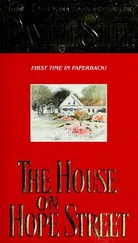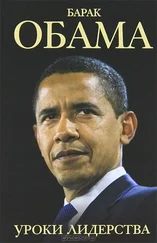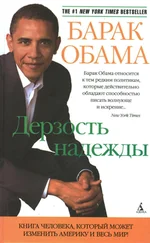Барак Обама - The Audacity of Hope
Здесь есть возможность читать онлайн «Барак Обама - The Audacity of Hope» весь текст электронной книги совершенно бесплатно (целиком полную версию без сокращений). В некоторых случаях можно слушать аудио, скачать через торрент в формате fb2 и присутствует краткое содержание. Жанр: Политика, на английском языке. Описание произведения, (предисловие) а так же отзывы посетителей доступны на портале библиотеки ЛибКат.
- Название:The Audacity of Hope
- Автор:
- Жанр:
- Год:неизвестен
- ISBN:нет данных
- Рейтинг книги:5 / 5. Голосов: 1
-
Избранное:Добавить в избранное
- Отзывы:
-
Ваша оценка:
- 100
- 1
- 2
- 3
- 4
- 5
The Audacity of Hope: краткое содержание, описание и аннотация
Предлагаем к чтению аннотацию, описание, краткое содержание или предисловие (зависит от того, что написал сам автор книги «The Audacity of Hope»). Если вы не нашли необходимую информацию о книге — напишите в комментариях, мы постараемся отыскать её.
The Audacity of Hope — читать онлайн бесплатно полную книгу (весь текст) целиком
Ниже представлен текст книги, разбитый по страницам. Система сохранения места последней прочитанной страницы, позволяет с удобством читать онлайн бесплатно книгу «The Audacity of Hope», без необходимости каждый раз заново искать на чём Вы остановились. Поставьте закладку, и сможете в любой момент перейти на страницу, на которой закончили чтение.
Интервал:
Закладка:
Such a shift in emphasis is not easy: Old habits die hard, and there is always a fear on the part of many minorities that unless racial discrimination, past and present, stays on the front burner, white America will be let off the hook and hard-fought gains may be reversed. I understand these fears — nowhere is it ordained that history moves in a straight line, and during difficult economic times it is possible that the imperatives of racial equality get shunted aside.
Still, when I look at what past generations of minorities have had to overcome, I am optimistic about the ability of this next generation to continue their advance into the economic mainstream. For most of our recent history, the rungs on the opportunity ladder may have been more slippery for blacks; the admittance of Latinos into firehouses and corporate suites may have been grudging. But despite all that, the combination of economic growth, government investment in broad-based programs to encourage upward mobility, and a modest commitment to enforce the simple principle of nondiscrimination was sufficient to pull the large majority of blacks and Latinos into the socioeconomic mainstream within a generation.
We need to remind ourselves of this achievement. What’s remarkable is not the number of minorities who have failed to climb into the middle class but the number who succeeded against the odds; not the anger and bitterness that parents of color have transmitted to their children but the degree to which such emotions have ebbed. That knowledge gives us something to build on. It tells us that more progress can be made.
IF UNIVERSAL STRATEGIES that target the challenges facing all Americans can go a long way toward closing the gap between blacks, Latinos, and whites, there are two aspects of race relations in America that require special attention — issues that fan the flames of racial conflict and undermine the progress that’s been made. With respect to the African American community, the issue is the deteriorating condition of the inner-city poor. With respect to Latinos, it is the problem of undocumented workers and the political firestorm surrounding immigration.
One of my favorite restaurants in Chicago is a place called MacArthur’s. It’s away from the Loop, on the west end of the West Side on Madison Street, a simple, brightly lit space with booths of blond wood that seat maybe a hundred people. On any day of the week, about that many people can be found lining up — families, teenagers, groups of matronly women and elderly men — all waiting their turn, cafeteria-style, for plates filled with fried chicken, catfish, hoppin’ John, collard greens, meatloaf, cornbread, and other soul-food standards. As these folks will tell you, it’s well worth the wait.
The restaurant’s owner, Mac Alexander, is a big, barrel-chested man in his early sixties, with thinning gray hair, a mustache, and a slight squint behind his glasses that gives him a pensive, professorial air. He’s an army vet, born in Lexington, Mississippi, who lost his left leg in Vietnam; after his convalescence, he and his wife moved to Chicago, where he took business courses while working in a warehouse. In 1972, he opened Mac’s Records, and helped found the Westside Business Improvement Association, pledging to fix up what he calls his “little corner of the world.”
By any measure he has succeeded. His record store grew; he opened up the restaurant and hired local residents to work there; he started buying and rehabbing run-down buildings and renting them out. It’s because of the efforts of men and women like Mac that the view along Madison Street is not as grim as the West Side’s reputation might suggest. There are clothing stores and pharmacies and what seems like a church on every block. Off the main thoroughfare you will find the same small bungalows — with neatly trimmed lawns and carefully tended flower beds — that make up many of Chicago’s neighborhoods.
But travel a few blocks farther in any direction and you will also experience a different side of Mac’s world: the throngs of young men on corners casting furtive glances up and down the street; the sound of sirens blending with the periodic thump of car stereos turned up full blast; the dark, boarded-up buildings and hastily scrawled gang signs; the rubbish everywhere, swirling in winter winds. Recently, the Chicago Police Department installed permanent cameras and flashing lights atop the lampposts of Madison, bathing each block in a perpetual blue glow. The folks who live along Madison didn’t complain; flashing blue lights are a familiar enough sight. They’re just one more reminder of what everybody knows — that the community’s immune system has broken down almost entirely, weakened by drugs and gunfire and despair; that despite the best efforts of folks like Mac, a virus has taken hold, and a people is wasting away.
“Crime’s nothing new on the West Side,” Mac told me one afternoon as we walked to look at one of his buildings. “I mean, back in the seventies, the police didn’t really take the idea of looking after black neighborhoods seriously. As long as trouble didn’t spill out into the white neighborhoods, they didn’t care. First store I opened, on Lake and Damen, I must’ve had eight, nine break-ins in a row.
“The police are more responsive now,” Mac said. “The commander out here, he’s a good brother, does the best he can. But he’s just as overwhelmed as everybody else. See, these kids out here, they just don’t care. Police don’t scare ’em, jail doesn’t scare ’em — more than half of the young guys out here already got a record. If the police pick up ten guys standing on a corner, another ten’ll take their place in an hour.
“That’s the thing that’s changed…the attitude of these kids. You can’t blame them, really, because most of them have nothing at home. Their mothers can’t tell them nothing — a lot of these women are still children themselves. Father’s in jail. Nobody around to guide the kids, keep them in school, teach them respect. So these boys just raise themselves, basically, on the streets. That’s all they know. The gang, that’s their family. They don’t see any jobs out here except the drug trade. Don’t get me wrong, we’ve still got a lot of good families around here…not a lot of money necessarily, but doing their best to keep their kids out of trouble. But they’re just too outnumbered. The longer they stay, the more they feel their kids are at risk. So the minute they get a chance, they move out. And that just leaves things worse.”
Mac shook his head. “I don’t know. I keep thinking we can turn things around. But I’ll be honest with you, Barack — it’s hard not to feel sometimes like the situation is hopeless. Hard — and getting harder.”
I hear a lot of such sentiments in the African American community these days, a frank acknowledgment that conditions in the heart of the inner city are spinning out of control. Sometimes the conversation will center on statistics — the infant mortality rate (on par with Malaysia among poor black Americans), or black male unemployment (estimated at more than a third in some Chicago neighborhoods), or the number of black men who can expect to go through the criminal justice system at some point in their lives (one in three nationally).
But more often the conversation focuses on personal stories, offered as evidence of a fundamental breakdown within a portion of our community and voiced with a mixture of sadness and incredulity. A teacher will talk about what it’s like to have an eight-year-old shout obscenities and threaten her with bodily harm. A public defender will describe a fifteen-year-old’s harrowing rap sheet or the nonchalance with which his clients predict they will not live to see their thirtieth year. A pediatrician will describe the teenage parents who don’t think there’s anything wrong with feeding their toddlers potato chips for breakfast, or who admit to having left their five- or six-year-old alone at home.
Читать дальшеИнтервал:
Закладка:
Похожие книги на «The Audacity of Hope»
Представляем Вашему вниманию похожие книги на «The Audacity of Hope» списком для выбора. Мы отобрали схожую по названию и смыслу литературу в надежде предоставить читателям больше вариантов отыскать новые, интересные, ещё непрочитанные произведения.
Обсуждение, отзывы о книге «The Audacity of Hope» и просто собственные мнения читателей. Оставьте ваши комментарии, напишите, что Вы думаете о произведении, его смысле или главных героях. Укажите что конкретно понравилось, а что нет, и почему Вы так считаете.

![Барак Обама - Дерзость надежды. Мысли об возрождении американской мечты [The Audacity of Hope]](/books/26630/barak-obama-derzost-nadezhdy-mysli-ob-vozrozhdenii-thumb.webp)










